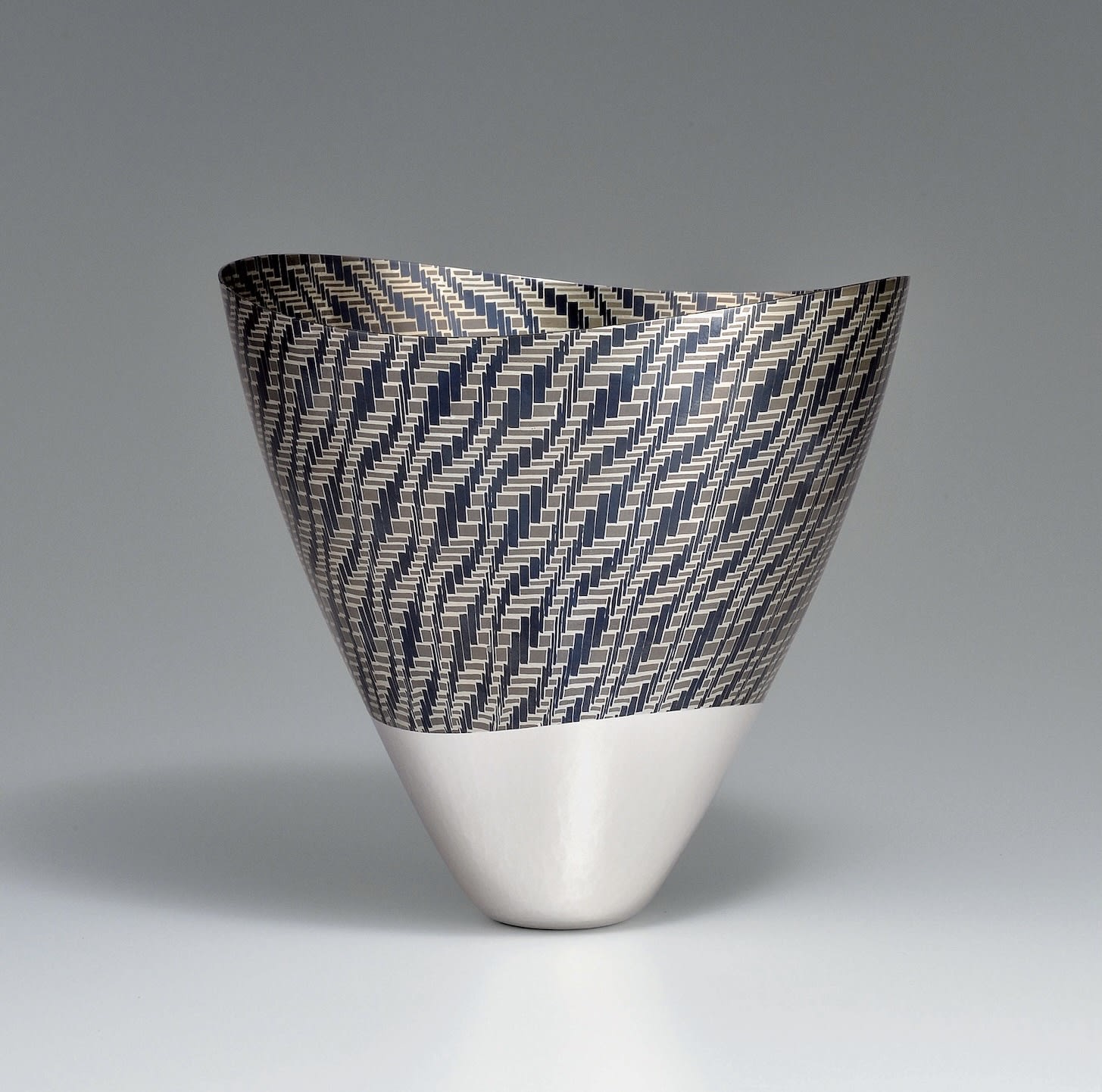-
-
As an extension of our current metalwork exhibition Earth, Air, Fire & Water, Onishi Gallery is delighted to share with you an intimate studio visit of metalwork artist, Iede Takahiro. He is renowned for applying bamboo weaving techniques to metalwork, a method that he later coined aya-origane. Behind the glossy and seemingly perfect exterior of his work are the hundreds and even thousands of hours that the artist spent laboring over each piece. We hope to offer a glimpse into Iede's unique process and further explore the inspirations and origins behind his truly dazzling designs.
-
 Iede Takahiro, Container Kotodama (The Spirit of Language), 2018
Iede Takahiro, Container Kotodama (The Spirit of Language), 2018 -

-

Iede Takahiro, Kaze no Homura (Wind's Flame), 2014
-
First, the artist cuts thin strips of shakudō (gold and copper alloy) and shibuichi (silver and copper alloy) out of a flat sheet of metal that will later be woven together. He then heats and hammers each strip, crimping them along its length and tightly weaving the strips into his desired pattern. Finally, Iede carefully pours pours ginrō, a silver adhesive onto the piece, which melts into the grooves of the metal strips due to its lower melting point.
-

-

-
It took the artist over two months to shape Hibiki (pictured below) for this process alone.
-
 Iede Takahiro, Vessel Hibiki (Resonance), 2018
Iede Takahiro, Vessel Hibiki (Resonance), 2018 -
Iede commented, “Because I included the white, undecorated portion of the vessel, Ritsu feels softer and more graceful than some of my previous work.”
-
 Iede Takahiro, Vessel Ritsu (Rhythm), 2019
Iede Takahiro, Vessel Ritsu (Rhythm), 2019 -
 "Ritsu" on display at Onishi Gallery's exhibition, 'Earth, Air, Fire and Water: the Four Elements in Japanese Arts.'
"Ritsu" on display at Onishi Gallery's exhibition, 'Earth, Air, Fire and Water: the Four Elements in Japanese Arts.' -
-
Learn more about Iede takahiro
Studio Visit: Iede Takahiro
Past viewing_room









